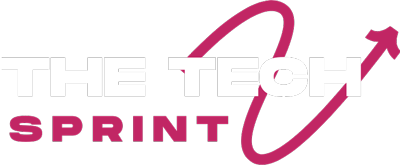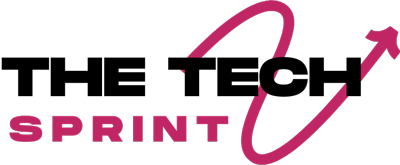The world of software is no longer solely dominated by tech giants. Unlike broad, all-encompassing platforms, Micro-SaaS focuses on solving very specific problems for highly targeted audiences. Thanks to advancements in no-code tools and AI-driven development, launching a specialized software solution is now more accessible than ever, even for those without a technical background.
Why Micro-SaaS Stands Out for Solopreneurs
The Micro-SaaS model offers a compelling alternative to traditional software-as-a-service, particularly for individuals or small teams aiming for efficiency and profitability.
Lean Operations, Max Impact
The defining characteristic of Micro-SaaS is its focused scope. Instead of trying to be everything to everyone, these solutions target a precise pain point for a specific industry or user group. This narrow focus significantly reduces complexity in development, marketing, and customer support. Solopreneurs can leverage this streamlined approach to build, launch, and manage their products with minimal overhead, often relying on automation and AI-powered tools to handle routine tasks
The Power of Predictable, Recurring Revenue
One of the most attractive aspects of Micro-SaaS for solopreneurs is the potential for passive income. Built on a subscription-based model, customers pay monthly or annually for continued access to the specialized software. This predictable revenue stream allows founders to scale their income steadily without constantly seeking new clients, providing a stable foundation for growth. Furthermore, the lower pricing typical of niche solutions often leads to higher customer retention, as users find the targeted solution indispensable and affordable.
No-Code & AI Lowering the Bar
The barrier to entry for software development has dramatically decreased. Platforms like Bubble.io, Webflow, and Flutterflow empower even non-technical entrepreneurs to build fully functional Micro-SaaS products without writing a single line of code. This democratizes the software industry, allowing passionate problem-solvers to bring their niche solutions to life without the need for expensive development teams. AI-driven tools further enhance efficiency, automating tasks from content generation to customer support, making single-person operations more viable than ever.
Key Differences: Micro-SaaS vs. Traditional SaaS
Understanding the fundamental distinctions between Micro-SaaS and its larger counterparts is crucial for aspiring solopreneurs.
| Feature | Micro-SaaS | Traditional SaaS |
| Scope | Highly niche-specific problem-solving | Broad, multi-feature platform |
| Team Size | Solo founder or small team | Large teams (dev, marketing, sales, support) |
| Development | Low cost, often no-code/low-code | High cost, custom development |
| Launch Time | Weeks to months | Months to years |
| Customer Base | Small, highly targeted audience | Large, diverse user base |
| Revenue Model | Lower subscription pricing, high retention | Enterprise pricing, long-term contracts |
Top Micro-SaaS Opportunities for 2025
The thriving Micro-SaaS industry is a testament to the immense demand for specialized tools. Here are compelling areas where solopreneurs can find highly profitable niches:
Streamlining the Creator Economy with Specialized Tools
The booming creator economy, encompassing freelancers, digital marketers, bloggers, and online educators, is ripe for Micro-SaaS solutions. Consider tools that specifically address their unique pain points:
- AI-Powered Content Optimization: Beyond general content generation, imagine tools that specialize in generating hyper-specific social media captions for particular platforms (e.g., TikTok trends for specific niches), or AI that optimizes blog post outlines for obscure long-tail keywords.
- Freelancer Financial Dashboards: A tool focusing solely on managing inconsistent freelance income, calculating estimated taxes, or automating invoice follow-ups for specific contract types.
- Niche Analytics for Online Course Creators: Providing detailed insights into student engagement patterns for specific types of courses (e.g., craft courses, coding bootcamps) that broader analytics platforms might miss.
Hyper-Focused Automation for Small Businesses
Small and medium-sized businesses (SMBs) often lack the budget or expertise for complex enterprise software. This creates a vast market for Micro-SaaS that offers precise automation for their specific, often overlooked, needs:
- Local SEO & Reputation Management for Specific Trades: Instead of general SEO tools, focus on automating Google My Business optimization or review management specifically for plumbers, electricians, or independent restaurants.
- Subscription Oversight for Agencies: A simple tool for digital agencies to track and manage their myriad of client-specific SaaS subscriptions, preventing unnecessary spending and improving client billing.
- Automated Compliance for Niche Industries: Software that provides real-time alerts and audit trails for micro-businesses in highly regulated sectors like local food production, specialized craft imports, or small healthcare clinics.
Enhancing Everyday Life with Targeted Apps
Consumer needs are also a fertile ground for Micro-SaaS, particularly in areas where general apps might be too broad:
- Personalized Wellness for Specific Conditions: Moving beyond general fitness, consider apps for tracking symptoms and lifestyle impacts for specific chronic conditions, or highly specialized mindfulness tools for particular stress triggers.
- Hyper-Organized Virtual Event Assistants: Instead of full-fledged event platforms, a tool solely focused on automating post-event follow-ups, or managing complex breakout room scheduling for specific types of online workshops.
A Strategic Roadmap
Success in Micro-SaaS isn’t about grand visions; it’s about precise execution and solving a clear problem. Follow these steps to transform your idea into a profitable venture:
- Identify a Profitable Niche: This is your foundation. Use tools like Google Trends, Reddit, and industry forums to find underserved communities with specific pain points.
- Validate Your Idea: Before building, confirm demand. Create a simple landing page, collect email sign-ups, and even run small ad campaigns to gauge interest and willingness to pay.
- Choose Your Tech Stack Wisely: For solopreneurs, no-code/low-code platforms (like Bubble.io, Webflow, Glide) are often the best starting point, accelerating development and reducing costs.
- Build a Minimum Viable Product (MVP): Focus on the core functionality that solves the main problem. Launch early with essential features, gather feedback from early adopters, and iterate quickly.
- Market Your Product with Precision: Since you’re targeting a niche, focus your marketing efforts. Engage in relevant online communities, use SEO to attract organic traffic, and consider targeted paid ads.
- Scale Strategically: As your Micro-SaaS gains traction, prioritize automation for onboarding, support, and billing. Continuously collect feedback to refine features and explore partnerships for expanded reach.
Conclusion
The landscape of software entrepreneurship has never been more welcoming to the individual. Micro-SaaS & Niche Software offers an unparalleled opportunity to build a sustainable, recurring revenue business by focusing on highly specialized solutions. By identifying a clear pain point, leveraging accessible development tools, and maintaining a lean operation, solopreneurs can truly profit from their ability to create impactful, targeted software. The future of software is small, specialized, and highly profitable for those who dare to build it.
Frequently Asked Questions (FAQs)
What is Micro-SaaS and how does it differ from traditional SaaS?
Micro-SaaS refers to small, niche-focused software-as-a-service solutions that target a specific problem for a precise audience, typically built by solo founders or small teams. Traditional SaaS, in contrast, aims for broad markets with multi-feature platforms and larger teams.
Why is Micro-SaaS an ideal business model for solopreneurs?
Micro-SaaS is ideal for solopreneurs due to its low startup costs (often using no-code tools), potential for recurring passive income, easier management, and scalability, allowing single founders to maintain control and operate efficiently.
Can non-technical entrepreneurs build Micro-SaaS solutions?
Yes, absolutely. With the widespread availability of no-code and low-code development platforms (like Bubble.io or Webflow), non-technical entrepreneurs can build fully functional Micro-SaaS products without needing to write code.
What are some examples of profitable Micro-SaaS niches for 2025?
Profitable niches for 2025 include specialized AI-powered content optimization tools, niche analytics software for small businesses, hyper-focused automation for local trades, and virtual event planning assistants for specific online workshops.
How important is market validation before building a Micro-SaaS?
Market validation is crucial. Before significant development, it’s essential to confirm demand by conducting user surveys, setting up a landing page to collect email sign-ups, or running small ad campaigns to gauge interest and willingness to pay.
How do Micro-SaaS businesses typically generate revenue?
Most Micro-SaaS businesses operate on a subscription-based pricing model, where customers pay a recurring monthly or annual fee for continued access to the specialized software, ensuring a predictable and steady income stream.
What’s the key to scaling a Micro-SaaS strategically?
Scaling a Micro-SaaS strategically involves automating onboarding and customer support, continuously collecting user feedback to improve features, and exploring partnerships or integrations to expand reach without overextending resources.


